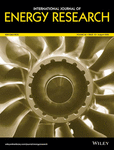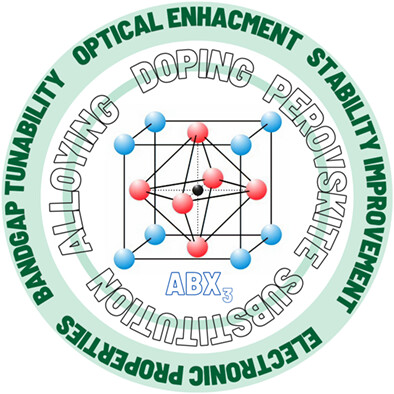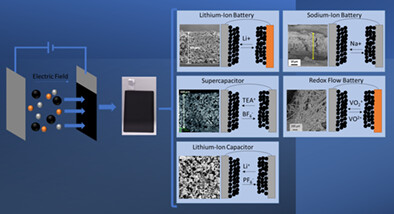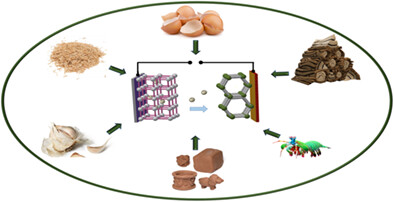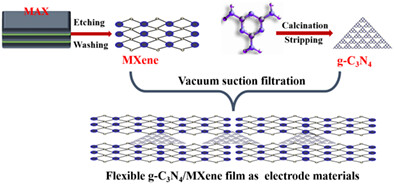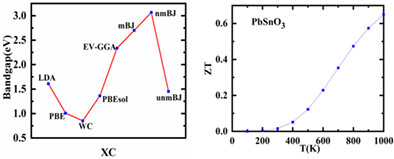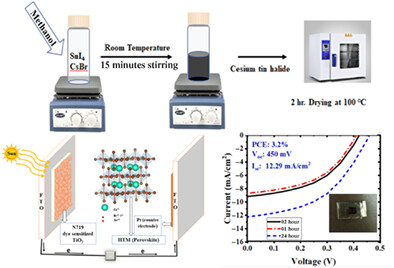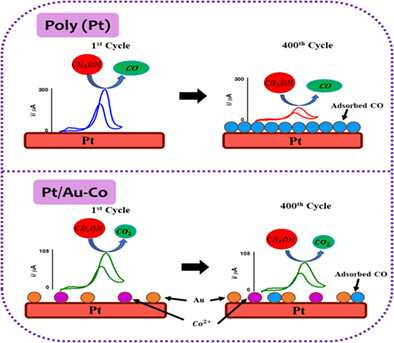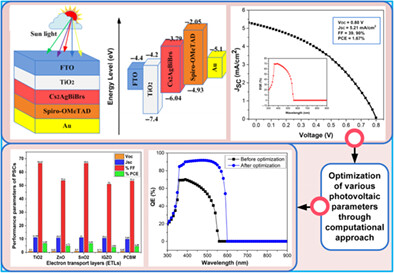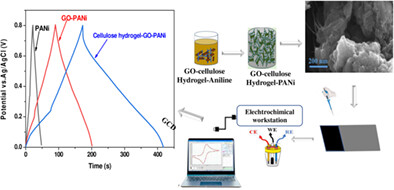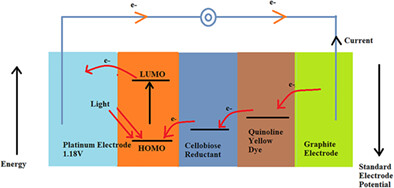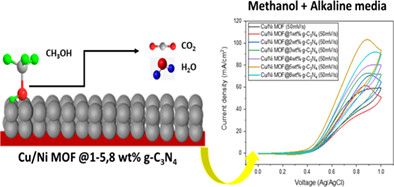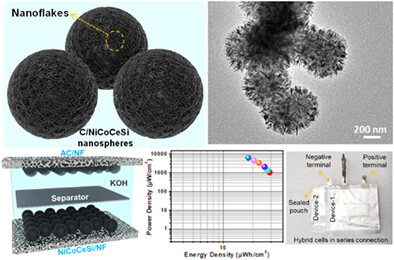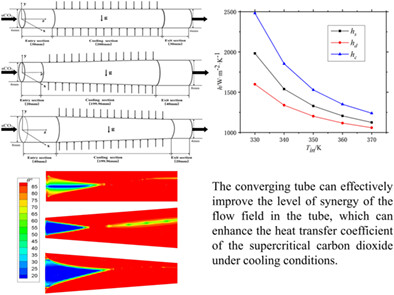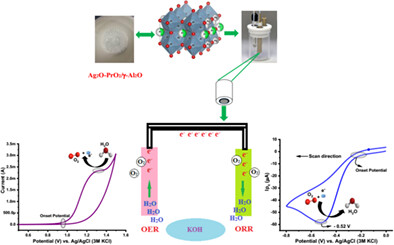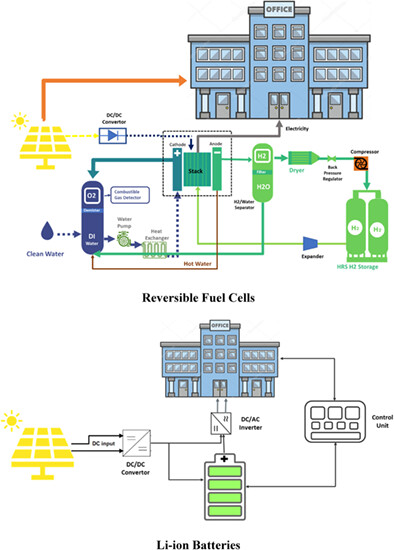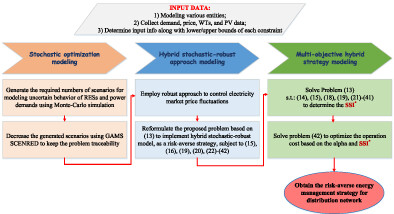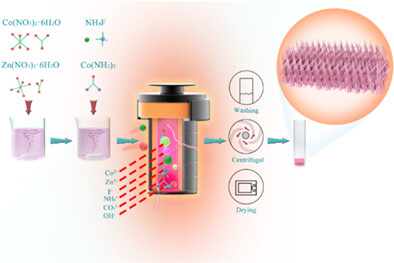Journal list menu
Export Citations
Download PDFs
Issue Information
- Pages: 13111-13116
- First Published: 19 July 2022
A review on theoretical studies of structural and optoelectronic properties of FA-based perovskite materials with a focus on FAPbI3
- Pages: 13117-13151
- First Published: 11 May 2022
Recent development of aqueous zinc-ion battery cathodes and future challenges: Review
- Pages: 13152-13177
- First Published: 22 May 2022
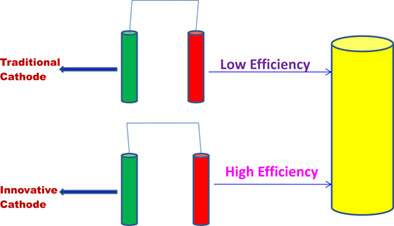
Among the aqueous electrolyte-based energy storage devices, ZIB was observed to be the most ideal one. Zn has better characteristic properties as an anode than other metallic materials (eg, Mg and Al), such as high electrical conductivity, easy processability, high compatibility/stability in water, non-flammability, low toxicity, comparatively lower price and abundance. Zn anode possesses a high theoretical capacity (820 mAh g−1), suitable redox potential (−0.76 V vs standard hydrogen electrode [SHE]) in aqueous electrolyte, and relatively low polarizability compared with Mg and Al.
Metal-organic frameworks and their derivatives as anode material in lithium-ion batteries: Recent advances towards novel configurations
- Pages: 13178-13204
- First Published: 23 May 2022
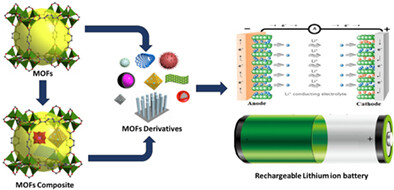
This work summarises MOF-based anode material for lithium ion batteries such as bi-metallic MOF, MOF-based composites, MOF-derived carbonaceous materials, and MOF-derived metal oxides. The initial charge/discharge capacities, current density, and stability of these materials have been studied for their performance evaluation for anode applications.
Modern practices in electrophoretic deposition to manufacture energy storage electrodes
- Pages: 13205-13250
- First Published: 18 May 2022
Review on the application of green and environmentally benign biowaste and natural substances in the synthesis of lithium-ion batteries
- Pages: 13251-13275
- First Published: 28 May 2022
A bright future of hydrogels in flexible batteries and Supercapacitors storage systems: A review
- Pages: 13276-13307
- First Published: 01 June 2022
Synthesis of free-standing flexible g-C3N4/MXene film as electrode materials for supercapacitors
- Pages: 13308-13315
- First Published: 30 May 2022
Design of coil parameters for inductive type wireless power transfer system in electric vehicles
- Pages: 13316-13335
- First Published: 28 May 2022
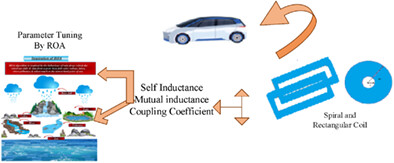
The charging coils are designed concerning resonant inductive coupling and the optimal values of the parameters are obtained by rain optimization.Then the range obtained by applying the optimization is evaluated in ANSYS MAXWELL and FEMM 4.1 software and the values obtained are evaluated in both spiral and rectangular coil of 2 dimensional and 3 dimensional wireless power transfer coils.
Assessment and conceptual design of a SOFC/TIG/TEG-based hybrid propulsion system for a small UAV
- Pages: 13336-13355
- First Published: 24 May 2022
Comparative analysis of multicriteria decision-making approaches for evaluation hydrogen projects development from wind energy
- Pages: 13356-13376
- First Published: 12 May 2022

In this study, a comprehensive approach is presented to locating hydrogen production from wind energy using multicriteria decision-making (MCDM). To implement the proposed approach, a case study in Iran and Hormozgan province is used. Hormozgan province is in good condition in terms of wind potential and many industries in this province need energy and hydrogen.
A comprehensive analysis on elastic, mechanical, thermodynamic and thermoelectric properties of PbSnO3: A density functional theory study
- Pages: 13377-13392
- First Published: 17 May 2022
Discovery of versatile bat-shaped acceptor materials for high-performance organic solar cells - a DFT approach
- Pages: 13393-13408
- First Published: 18 May 2022
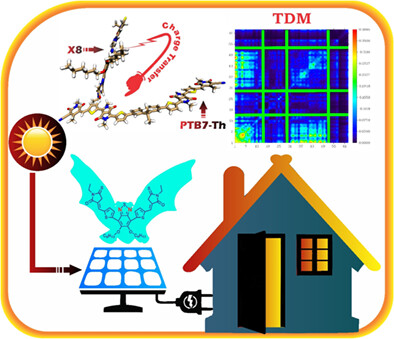
We used a quantum chemical approach to address the growing demand for competent photovoltaic materials, with excellent electronic structure, and optoelectronic properties, eight molecules X1-X8 were designed via π-spacer modification and investigated using DFT and TD-DFT computation. The newly designed molecules exhibited outstanding photovoltaic and optoelectronic properties.
Exploration of structural, electronic, optical, mechanical, thermoelectric, and thermodynamic properties of XInO3 (X = As, Sb) compounds for energy harvesting applications
- Pages: 13409-13423
- First Published: 11 May 2022
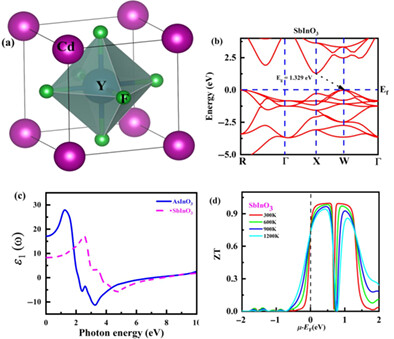
This figure showed the (A) structure, (B) band structure of SbInO3, (C) real dielectric function XInO3 (X = As, Sb) compounds, and (D) figure of merit (zT) of SbInO3 compound. We focused on the theoretical study of the XInO3 (X = As, Sb) by employing the full-potential linearized augmented plane wave. Figure (A) shows the cubic structure of XInO3 (X = As, Sb) having the space group Fm3m (225), and figure (B) demonstrates the band structure with indirect bandgap value (1.329 eV). Further, we computed the real dielectric function to examine the transition of materials and figure of merit (ZT) against chemical potential as shown in figures (C,D), respectively. Maximum transition and highest ZT values advocated these materials are applicable to use in energy harvesting applications.
Performance assessment of a dual-axis solar tracker for concentrator photovoltaic systems
- Pages: 13424-13440
- First Published: 11 May 2022

In this study, a simple and accurate dual-axis elliptic solar tracker is designed, fabricated, and experimentally evaluated. The altitude and solar azimuth angles of the tracker are estimated based on the tracking of an elliptical path around the sun and compared with the measured values, eliminating other interfering effects, such as clouds. Furthermore, the tracker is used to evaluate the performance of a CPV system combined with a finned heat sink at a solar CR of 50 suns.
A facile one-step solution synthesis of Cs2SnI6−xBrx using less-toxic methanol solvent for application in dye-sensitized solar cells
- Pages: 13441-13452
- First Published: 26 May 2022
Activation of Fe species on graphitic carbon nitride nanotubes for efficient photocatalytic ammonia synthesis
- Pages: 13453-13462
- First Published: 15 May 2022

A highly efficient photocatalytic system is designed via embedding surface-active Fe species into the basal plane of graphitic carbon nitride nanotubes, which can efficiently adsorb and activate N2 molecules, and can drive fast charge transfer to realize highly efficient charge separation/transfer, thereby enhancing the nitrogen fixation activity.
A Fletcher-Reeves conjugate gradient optimized multi-reservoir echo state network for state of charge estimation in vehicle battery
- Pages: 13463-13475
- First Published: 18 May 2022
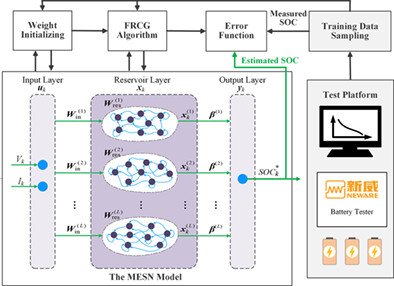
- The multi-reservoir echo state network (MESN) is established for battery state of charge (SOC) estimation.
- The Fletcher-Reeves conjugate gradient (FRCG) algorithm is explored to estimate the output weights of the MESN.
- An appropriate amount of Gaussian noise is added to the training data to prevent overfitting.
- The proposed FRCG-MESN method is verified with different initial SOCs.
Effect of poly(acrylic acid) binder on the stability of sulfur-enriched crystalline Mo3S13 clusters for high capacity of Li-ion batteries
- Pages: 13476-13486
- First Published: 13 May 2022
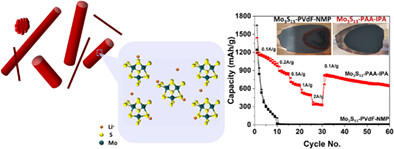
We applied sulfur-enriched crystalline Mo3S13 clusters without any carbon supports as an anode material for Li-ion batteries to increase the number of active sites and energy densities. we confirmed that employing poly(acrylic acid) and isopropyl alcohol as a binder and solvent, respectively, was appropriate for retaining the Mo3S13 cluster crystallinity during electrode preparation, resulting in the enhanced cycling stability.
Co-production of bioethanol and commercially important exopolysaccharides from the marine cyanobacterium Synechococcus elongatus BDU 10144 in a novel low-cost seawater-fertilizer-based medium
- Pages: 13487-13510
- First Published: 11 May 2022
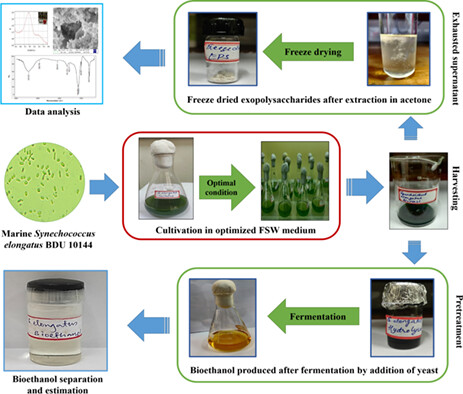
Cyanobacteria can be found in a variety of bio-economy products like biofuels, cosmetics and pharmaceuticals. The marine cyanobacterium Synechococcus elongatus BDU 10144 was shown for the first time to be a quintessential feedstock for co-production of bioethanol and high-value exopolysaccarides for sustainable biorefinery.
A comparative investigation of different exchange-correlation functionals oriented prediction of structural, electronic, optical, and transport properties of the novel quaternary LiTiCoSn
- Pages: 13511-13527
- First Published: 26 May 2022
Mn2V2O7 spiked ball-like material as bifunctional oxygen catalyst for zinc-air batteries
- Pages: 13528-13540
- First Published: 13 May 2022
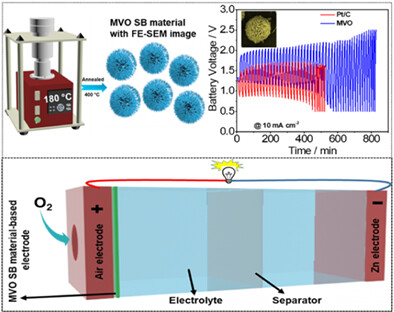
The Mn2V2O7 spiked ball structure (MVO SB) catalyst material is synthesized. The MVO SB material is used as a cathode for Zn-air batteries for the first time. The MVO SB material reveals a direct 4e− transfer pathway and the assembled Zn-air battery with MVO SB material exhibits excellent cycling stability.
Sol-gel based copper metallic layer as external anode for microtubular solid oxide fuel cell
- Pages: 13541-13555
- First Published: 14 May 2022
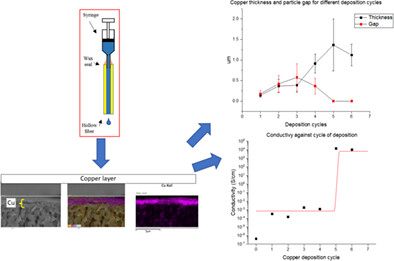
This study aims at elevating the anode conductivity of ceria-zirconia based anode of micro-tubular solid oxide fuel cell by fabricating metallic copper layer on top of the anode using modified sol-gel method. The copper layer elevated the conductivity by 1010 times, reduced ohmic and charge transfer resistance but also reduced the gas permeability by 10 times in the anode. This blocking can be resolved by increasing the amount of micron sized pore by using pore former during anode fabrication.
Constructing micropore-rich nitrogen-doped carbon for high-performance supercapacitor and adsorption of carbon dioxide
- Pages: 13556-13569
- First Published: 14 May 2022
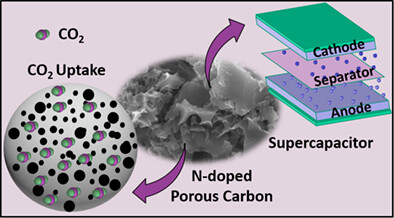
Nitrogen functionalized carbon was developed from ethylenediamine with high surface area of 1202.8 m2 g−1. Dependency of structural parameters on change in amount of activating reagent was investigated. Excellent supercapacitor performance with high capacitance of 353 F g−1 with 1 A g−1 of current. High selective adsorption of CO2 over N2 and CH4 was achieved.
Multi-objective optimization of thermoeconomic and component size of supercritical carbon dioxide recompression cycle based on small-scale lead-cooled fast reactor
- Pages: 13570-13589
- First Published: 12 May 2022
Structural and electrochemical properties of mesoporous FeVO4 as a negative electrode for lithium-ion battery
- Pages: 13590-13601
- First Published: 11 May 2022
Improved platinum-nickel nanoparticles with dopamine-derived carbon shells for proton exchange membrane fuel cells
- Pages: 13602-13612
- First Published: 13 May 2022
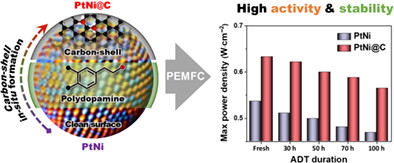
Using platinum-based alloy nanocatalysts with other transition metals has the advantages of enhancing the oxygen reduction reaction (ORR) activity and reducing the platinum usage. However, there are many challenges to using nanocatalysts, including their instability, which hinder their practical application. In this study, we employed a strategy to improve the intrinsic instability of a nanocatalyst by encapsulating a dopamine-derived carbon layer on the surfaces of nanoparticles.
Performance assessment of a 10 kW pressurized solid oxide fuel cell integrated with glycerol supercritical water reforming
- Pages: 13613-13626
- First Published: 17 May 2022

In this work, the integrated system of pressurized solid oxide fuel cell (SOFC) and supercritical water reforming of glycerol was proposed. The syngas from the reforming process has high temperature and pressure and thus, it can be used as fuel for the SOFC. The performance of an integrated system was determined through the Aspen Plus simulator in which the electrochemical equations were also included.
Proposal and evaluation of a solar-based polygeneration system: Development, exergoeconomic analysis, and multi-objective optimization
- Pages: 13627-13656
- First Published: 13 May 2022
Optimal parameter estimation of solid oxide fuel cells model using bald eagle search optimizer
- Pages: 13657-13669
- First Published: 23 May 2022
Enhanced performance by heteroatom-doped reduced graphene oxide-TiO2-based nanocomposites as photoanodes in dye-sensitised solar cells
- Pages: 13670-13686
- First Published: 13 May 2022

A comparative analysis of the physicochemical, optical, and electrical conductivity properties of TiO2 integrated with nitrogen- or boron-doped rGO in dye-sensitised solar cells (DSSCs) was investigated using eosin B or Sudan II as photo-harvesting dyes. The integration of heteroatoms significantly enhanced the photon absorption, exciton generation, charge carrier separation and reduced the recombination effect, resulting in the efficient transfer of photogenerated electrons. Also, the low content of TiO2 rendered better optoelectronic properties, leading to the fabrication of DSSCs with a relatively higher power conversion efficiency.
Low lattice thermal conductivity of hydride-based cubic antiperovskites A3HB (a = Li, Na; B = S, se, Te) with higher-order anharmonicity correction
- Pages: 13687-13697
- First Published: 18 May 2022
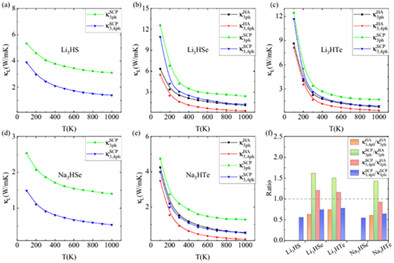
The first-principles calculations combined with self-consistent phonon theory, compressive sensing techniques are used, and the lattice thermal conductivity with the inclusion of cubic and quartic anharmonicity has been studied, which is fundamental to capture the reasonable temperature dependence of the lattice thermal conductivity.
Multimodal piezoelectric wind energy harvester for aerospace applications
- Pages: 13698-13710
- First Published: 07 June 2022
Performance analysis of a pumped hydro assisted near-isothermal compressed carbon dioxide energy storage system with gas/liquid phase change process
- Pages: 13711-13725
- First Published: 20 May 2022
Resilient expansion planning of virtual power plant with an integrated energy system considering reliability criteria of lines and towers
- Pages: 13726-13751
- First Published: 25 May 2022
Critical success factors for the implementation and management of energy cloud environments
- Pages: 13752-13768
- First Published: 25 May 2022
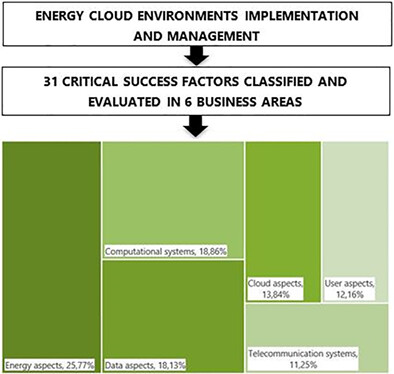
This article identifies, evaluates, and discusses the Critical Success Factors that impact the implementation and management of cloud-based energy management environments – Energy Cloud. Energy Cloud is driven by the distributed generation of renewable energies, electric vehicles, and energy storage technologies, thus providing flexibility and autonomy to users. The factors are hierarchically structured following the corresponding business area and, with the MAUT method, they are evaluated, generating relevant management insights regarding the development and implementation of these energy management environments.
Development of Pt/Au-Co composite electrode as a highly durable and efficient electrocatalyst for methanol electro-oxidation in alkaline media
- Pages: 13769-13780
- First Published: 22 May 2022
Biodiesel from waste oil under mild conditions by a combination of calcium-strontium oxide nanocatalyst and ultrasonic waves
- Pages: 13781-13800
- First Published: 23 May 2022
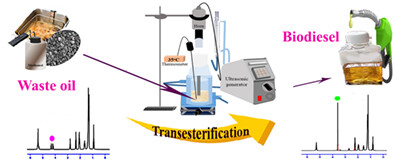
The transesterification of waste oils to biodiesel was crried out in the presence and absence of ultrasouns.
The innovation of this work is an environmentally friendly synthesized calcium-strontium nanocatalyst with ultrasound at low temperature.
The highest conversion of biodiesel was 99.2% under optimal reaction conditions
Investigating the potential of lead-free double perovskite Cs2AgBiBr6 material for solar cell applications: A theoretical study
- Pages: 13801-13819
- First Published: 22 May 2022
Ultralow loading FeCoNi alloy nanoparticles decorated carbon mat for hydrogen peroxide reduction reaction and its application in direct ethylene glycol fuel cells
- Pages: 13820-13831
- First Published: 17 May 2022

Hydrogen peroxide has been an attractive oxidant in direct liquid fuel cells. However, hydrogen peroxide reduction reaction heavily relies on noble metal-based electrocatalysts. In this work, a carbon mat decorated with FeCoNi alloy nanoparticles of ultralow loading, i.e., 0.146 mg cm−2, for hydrogen peroxide reduction is designed, fabricated, and applied as a free-standing cathode in a passive alkaline-acid direct ethylene glycol fuel cell.
Structural, optical, electrical, and DFT studies on polyvinyl pyrrolidone/polyethylene oxide polymer blend filled with MoO3 nanoplates for flexible energy-storage devices
- Pages: 13832-13843
- First Published: 16 May 2022
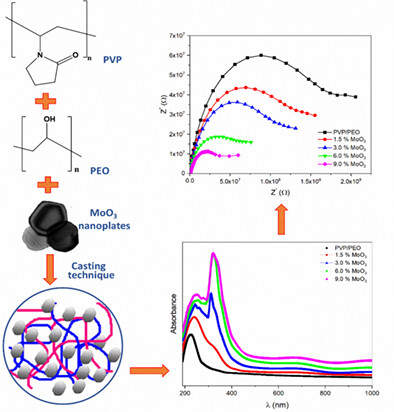
This research is particularly important from an academic point view as it helps in understanding the basic nanoscale processes that enhance the functional properties of composite materials. From this point of view, polymer nanocomposite films of PVP/PEO polymer filled with MoO3 nanoplates were prepared. The structural, optical, dielectric, and electrical properties of the PVP/PEO polymer were enhanced after adding MoO3 nanoplates. The results indicated the possibility of applying the produced films in electrochemical applications, especially in energy storage devices.
Synthesis and characterization of cellulose hydrogel/graphene oxide/polyaniline composite for high-performing supercapacitors
- Pages: 13844-13854
- First Published: 17 May 2022
Characterization of quaternary Heusler alloys CoFeYGe (Y = Ti, Cr) with respect to structural, electronic, magnetic, mechanical, and thermoelectric features
- Pages: 13855-13873
- First Published: 08 June 2022
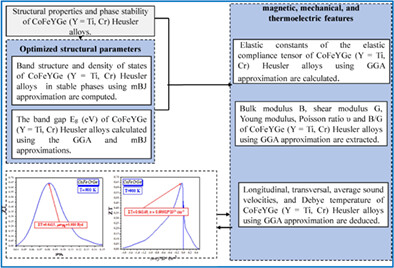
Two ways exist to enhance ZT values of CoFeTiGe and CoFeCrGe to 0.4032 and 0.64149, respectively: A charge carrier concentration of 17.392 × 1021 cm−3 for CoFeTiGe and 59.503 × 1021 cm−3 for CoFeCrGe is obtained. The second similar result is obtained by raising the chemical potential of CoFeTiGe and CoFeCrGe by 0.068 and 0.980 Ryd, respectively. To our knowledge, CoFeCrGe and CoFeTiGe exhibit exceptional spintronic and thermoelectric properties.
Oxy- and air-ammonia premixed combustion in a two-inlet cyclone combustor
- Pages: 13874-13888
- First Published: 20 May 2022
Photogalvanics of Dodecyltrimethyl Ammonium Bromide-Quinoline Yellow-alkali: A solar energy conversion, storage, photostability, and spectral study
- Pages: 13889-13907
- First Published: 24 May 2022
Double inorganic hole extraction layer of Cs:NiOx/CuInS2 for efficiency and stability enhancement of perovskite solar cells
- Pages: 13908-13914
- First Published: 16 May 2022
Electrocatalytic study of cu/Ni MOF and its g-C3N4 composites for methanol oxidation reaction
- Pages: 13915-13930
- First Published: 20 May 2022
Research on the remaining useful life prediction method of lithium-ion batteries based on aging feature extraction and multi-kernel relevance vector machine optimization model
- Pages: 13931-13946
- First Published: 28 May 2022

Using charging data, eight sets of charging features were analyzed and extracted as indirect aging features of Li-ion batteries. The capacity degradation process of Li-ion battery is simulated using a fused kernel function formed by linear combination of three kernel functions, and the improved GWO algorithm is used to optimize the combination coefficients to obtain an improved multi-kernel RVM model to predict the RUL of Li-ion battery.
Carbon-embedded mesoporous transition multimetal oxide nanospheres for long-lasting hybrid cells
- Pages: 13947-13960
- First Published: 20 May 2022
Modified search and rescue optimization algorithm for identifying the optimal parameters of high efficiency triple-junction solar cell/module
- Pages: 13961-13985
- First Published: 18 May 2022
Rapid and deposition-free preheating of lithium-ion cell with square wave current
- Pages: 13986-14004
- First Published: 23 May 2022
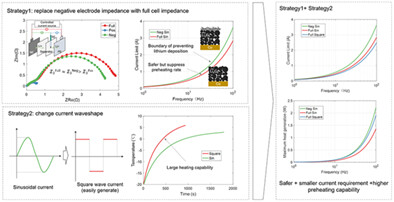
Rapid and deposition-free preheating of lithium--ion cell with square wave current
To enhanced the applicability of preheating method, the strategies of replacing negative electrode impedance with full cell impedance and of substituting sinusoidal current using square wave current is proposed. Based on the strategies, a square wave preheating method is proposed and quantitatively proved capable of heating up the cell more safely and more efficiently.
A new catalyst for HER: Tin-Cobalt Co-deposited nickel matrix
- Pages: 14005-14013
- First Published: 24 May 2022
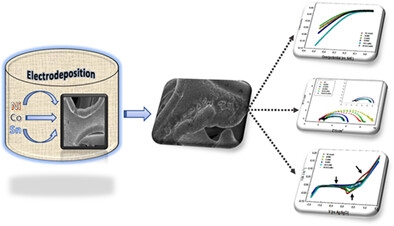
Hydrogen, called the energy source of the future, is a superb energy carrier. Electrolysis of water is the only method in the production of hydrogen classified with the green category. However, although the cost of hydrogen production by electrolysis has decreased considerably in recent years, it still has not reached reasonable levels.
Radical reactivity evaluation for the identification of electrolyte materials involved in electrode–electrolyte interphase formation
- Pages: 14014-14022
- First Published: 20 May 2022
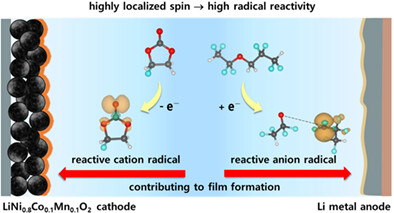
The evaluation of the reactivity of the radicals involved in the oxidation/reduction process is noted to be the most simple and effective method to explain the experimental results of electrolyte materials. Therefore, radical reactivity is a key parameter in interpreting the experimental phenomena and efficiently determining the desired materials in interphase formation. This work makes a significant contribution to the literature by providing relevant findings that elucidate the materials that contribute to CEI and SEI formation, which has limited reports.
Green synthesis of Size-Controlled copper oxide nanoparticles as catalysts for H2 production from industrial waste aluminum
- Pages: 14023-14035
- First Published: 23 May 2022
Nitrogen-doped porous nanocarbons-conducting polymer composite film electrodes for flexible supercapacitors
- Pages: 14036-14043
- First Published: 22 May 2022
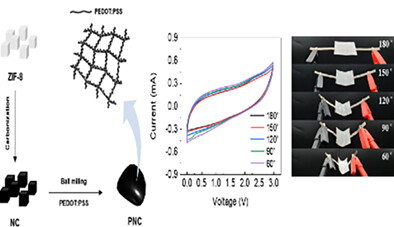
Flexible composite film based on N-doped porous nanocarbon and PEDOT:PSS conducting polymer for supercapacitor electrode is demonstrated. N-doped porous nanocarbon derived from porous ZIF-8 crystals provides high surface area with hierarchical porosity, while PEDOT:PSS provides additional active sites and serves as a conducting binder to form a robust film, resulting in high-performance flexible supercapacitor electrode.
Thermal performances evaluation of a flat-plate solar collector using microencapsulated phase-change slurry as heat transfer medium
- Pages: 14044-14059
- First Published: 01 June 2022
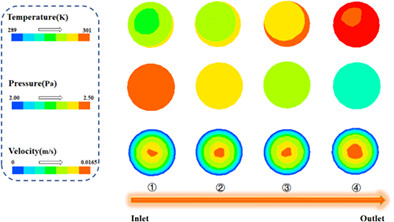
The solar radiation, MPCS mass fraction, latent heat, inlet flow rate, and inlet temperature were 500 W/m2, 5.90%, 88 kJ/kg, 0.01 m/s and 289 K, respectively. The temperature of the MPCS in the four risers gradually increased from the inlet to the outlet, and the maximum temperature rise was 12 K. The pressure gradually decreased from the inlet to the outlet, and the pressure in tube 1 was about 0.30 Pa greater than that in tube 4.
Investigation of degradation characteristics of electron irradiated GaInP/InGaAs/Ge solar cell by numerical simulation model
- Pages: 14060-14073
- First Published: 27 May 2022
Bio-waste derived carbon nano-onions as an efficient electrode material for symmetric and lead-carbon hybrid ultracapacitors
- Pages: 14074-14087
- First Published: 23 May 2022
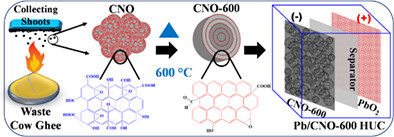
Carbon nano-onions (CNOs) synthesized by a single-step flame soot collection method, subsequently calcined at 600°C in an inert environment (CNO-600), are used as electrode material for the hybrid ultracapacitors. The lead-carbon hybrid ultracapacitor fabricated using CNO-600 as anode material and PbO2 as cathode delivers a specific capacitance of 515 F g−1 at 1 A g−1 in 4.5 M H2SO4 electrolyte in the voltage range of 2.3 and 0.6 V, demonstrate an excellent opportunity for the development of high-performance supercapacitors.
RETRACTED: Novel synthesis of layered MoS2/TiO2/CNT nanocomposite as a potential electrode for high performance supercapacitor applications
- Pages: 14088-14104
- First Published: 30 May 2022
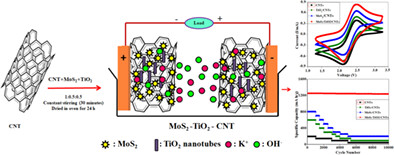
Re represents the resistance contribution from the electrolyte, electrode, and the passive film between them. The symbol Rf represented by the semicircle at high frequency are due to the Li+ migration through the solid electrolyte interphase film. The symbol Rct assigned to the charge-transfer resistance at the electrode/electrolyte interface, which is shown by a semicircle in mid-frequency region.
One-step hydrothermal method produced all graphene fiber electrode for high-performance supercapacitor
- Pages: 14105-14115
- First Published: 25 May 2022
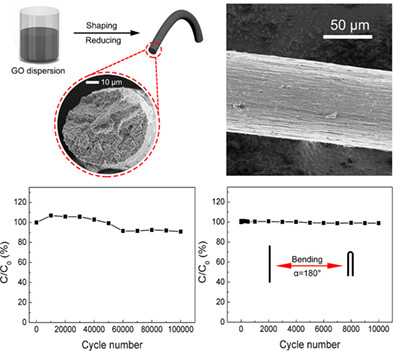
High-performance RGO fiber electrode is prepared by an efficient and inexpensive method, in which shaping and reducing processes of GO dispersion into RGO fiber are effectively condensed together. The resulted RGO fiber electrode exhibits excellent energy storage performance and flexibility. The capacitance can be maintained at 90.80% after 100 000 charge-discharge cycles and 98.94% after bending for 10 000 times, respectively.
Temperature effect and kinetics, LiZr2(PO4)3 and Li1.2Al0.2Zr1.8(PO4)3 and electrochemical properties for rechargeable ion batteries
- Pages: 14116-14132
- First Published: 07 June 2022
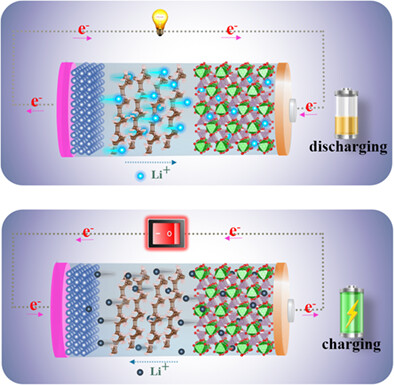
Highly efficient and high conductive NASICON-type is used as cathode material for the cells to improve their performance and studied various exposed climatic conditions to understand the temperature effects on battery capability. Herein, various factors affecting that can influence overall battery performance are discussed and to make usage of our batteries in real-time appliances.
Comparison and evaluation of supercritical CO2 cooling performance in horizontal tubes with variable cross-section by field synergy theory
- Pages: 14133-14144
- First Published: 23 May 2022
Techno-economic feasibility of hydrogen based electric vehicle charging station: A case study
- Pages: 14145-14160
- First Published: 30 May 2022
Highly effective bi-functional electrochemical activity of Ag2O-PrO2/γ-Al2O3 electrocatalysts towards OER and ORR
- Pages: 14161-14173
- First Published: 07 June 2022
Health degradation assessment of proton exchange membrane fuel cell based on multi-model probability fusion
- Pages: 14174-14190
- First Published: 22 May 2022
Thermodynamic analysis of a hybrid cogeneration energy system based on compressed air energy storage with high temperature thermal energy storage and supercritical CO2 Brayton cycle
- Pages: 14191-14205
- First Published: 25 May 2022
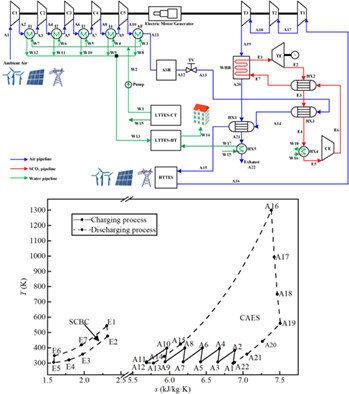
A hybrid cogeneration energy system based on compressed air energy storage, high temperature thermal energy storage, and supercritical CO2 Brayton cycle is proposed. The thermodynamic analysis reveals that the proposed system can achieve a round trip efficiency of 59.50%, an energy storage density of 5.55 kWh/m3, and an overall exergy efficiency of 62.75%. At the same time, the hot water about 88°C can be supplied.
Design and optimization of a novel reverse layered air-cooling battery management system using U and Z type flow patterns
- Pages: 14206-14226
- First Published: 03 June 2022
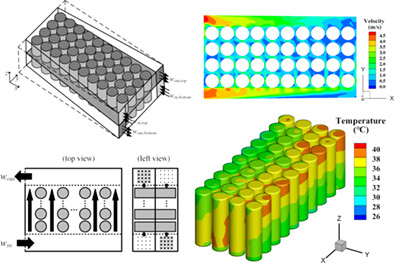
A reverse layered lateral series cooling scheme with U/Z type flow pattern is proposed for the forced-air cooling BTMS. It provides good cooling performance with uniform temperature distribution. The response surface methodology and the Cuckoo search algorithm are employed to optimize the proposed cooling scheme. The maximum temperature of the optimized design is reduced by 0.97°C and the temperature difference is reduced by up to 36.4% with the pressure drop increased merely by 1.28 Pa.
Multiple structural defects in poor crystalline nickel-doped tungsten disulfide nanorods remarkably enhance supercapacitive performance
- Pages: 14227-14239
- First Published: 20 May 2022
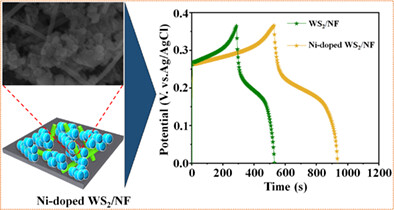
The Ni-doped WS2/NF NRs multiple structeral design array fabricated by two-step microwave-hydrothermal method for high-performance asymmetric supercapacitors with high capacity with excellent stability.
Design and thermal performance evaluation of a new solar air collector with comprehensive consideration of five factors of phase-change materials
- Pages: 14240-14255
- First Published: 01 June 2022
An adaptive spherical square-root double unscented Kalman filtering algorithm for estimating state-of-charge of lithium-ion batteries
- Pages: 14256-14267
- First Published: 20 May 2022
Improving the performance of recovered lead oxide powder from waste lead paste as active material for lead-acid battery
- Pages: 14268-14282
- First Published: 22 May 2022
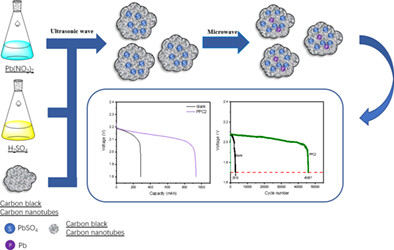
Adding composite material PbSO4/Pb@CB (PPC) or PbSO4/Pb@MC (PMC) into negative material prepared from recovered lead oxide powder greatly improves HRPSoC cycle life of lead acid batteries, due to the composite material having a multistage porous/mesoporous structure to provide a reaction site of Pb deposition and to increase the electrochemical active area of lead electrode. The proposed research provides a promising strategy for directly usingrecycled lead powder for lead-acid batteries which greatly benefit to lead resource recycling.
The synthesis of Ni/Mn hexacyanoferrate microcubes and nanorods for high-performance asymmetric supercapacitor in neutral electrolyte
- Pages: 14283-14294
- First Published: 20 May 2022
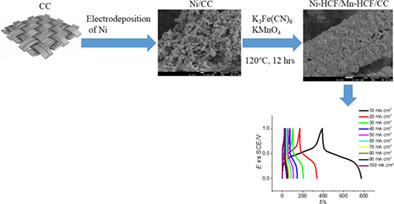
To significantly improve the rate capability of Ni-HCF-based electrode materials, a novel composite (Ni/Mn-HCF) was directly synthesized on carbon cloth (CC) with a facile two-step method. First, elemental Ni was electrodeposited on CC with a galvanostatic method. Then, Ni film-coated CC was heated in aqueous solution containing KMnO4 and K3Fe(CN)6. Elemental Ni was oxidized to Ni2+ by MnO4− and [Fe(CN)6]3−, which were reduced to Mn2+ and [Fe(CN)6]2−, respectively. The produced Ni2+ and Mn2+ immediately reacted with [Fe(CN)6]3− and [Fe(CN)6]4− to form Ni3[Fe(CN)6]2 (Ni-HCF) and Mn2[Fe(CN)6] (Mn-HCF), respectively. Ni/Mn-HCF on CC demonstrates a unique morphology with nanorods uniformly distributed on microcubes. Such unique morphology endows Ni-HCF/Mn-HCF enormous surface to facilitate rapid charge/ion transportation on the electrode/electrolyte interface and provide more active sites for ions adsorption/exchange. Ni/Mn-HCF demonstrated enhanced electrochemical performances such as high capacity, good rate performance, and long-term cycling stability.
Thermal decomposition behavior of ammonium perchlorate organic waste liquid by pyrolysis coupled with nonthermal plasma
- Pages: 14295-14304
- First Published: 26 May 2022
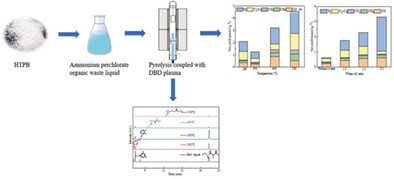
This paper provides a new method for the removal of AP and the presence of AP is conducive to the decomposition of benzene series. This study shows DBD plasma provides a good contribution to the gas production especially at low temperature. And the addition of stream can improve the gas production apparently. Moreover, the hydrogen concentration is about 40% and gas can be used as syngas to achieve low carbon emission and for energy saving.
High-energy-density supercapacitors using supersonically sprayed water-based precursors comprising cobalt iron oxide and reduced graphene oxide nanosheets
- Pages: 14305-14317
- First Published: 01 June 2022
Multi-method collaborative optimization for parallel air cooling lithium-ion battery pack
- Pages: 14318-14333
- First Published: 29 May 2022
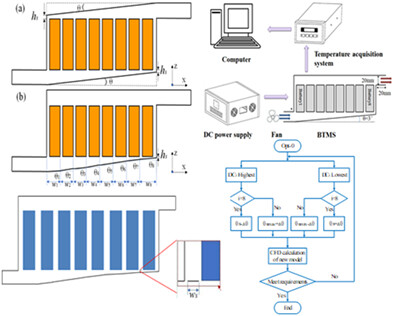
- The effects of the parameters of the manifold, cooling channel, and spoiler on the BTMS were studied.
- The angle of the distributed plenum was optimized in sections.
- Temperature drop and temperature uniformity increased by 10.57% and 92.58%, respectively.
- The CFD method was verified by experiment results.
Capsule-shaped calcium and cobalt-doped ZnO electrodes for high electrochemical supercapacitor performance
- Pages: 14334-14345
- First Published: 24 May 2022
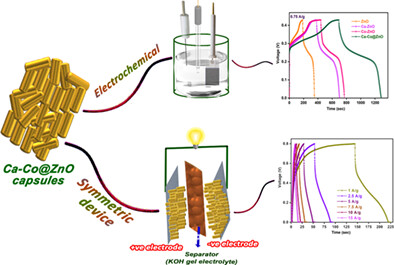
Herein, calcium (Ca) and cobalt (Co) co-doped ZnO capsules (Ca-Co@ZnO) were fabricated using a facile and single-step hydrothermal process.The specific capacitance was 1020 F/g at a current density of 0.75 A/g, which was 3.2, 1.7, and 1.6 times higher than the pristine ZnO, Ca-ZnO, and Co-ZnO capsules, respectively. Ca-Co@ZnO showed more than 50% capacity retention at a higher current density and strong cycling stability up to 5000 cycles with only 8% capacity loss.
Uncertainty and simulation-based cost analyses for energy storage systems used in green buildings
- Pages: 14346-14370
- First Published: 09 June 2022
Heat transfer augmentation of lithium-ion battery packs by incorporating an interrupted fin arrangement
- Pages: 14371-14395
- First Published: 29 May 2022
Performance improvement of co-culture inoculated microbial fuel cell using fuzzy modelling and Harris hawks optimization
- Pages: 14396-14407
- First Published: 29 May 2022
Electrochemical synthesis of tunable polypyrrole-based composites on carbon fabric for wide potential window aqueous supercapacitor
- Pages: 14408-14423
- First Published: 27 May 2022
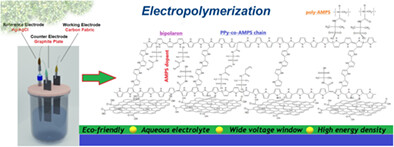
Facile one-step electrochemical polymerization of a novel graphitic oxide/polypyrrole/2-acrylamido-2-methyl-1-propanesulfonic acid composite on carbon fabric was developed for supercapacitor applications. In the aqueous electrolyte, the operating voltage reached 2.2 V, resulting in high-energy density, power efficiency, and long cyclic capacity.
Diffusion control and surface control mechanism in hierarchical nanostructured porous zinc-based MOF material for supercapattery
- Pages: 14424-14435
- First Published: 01 June 2022
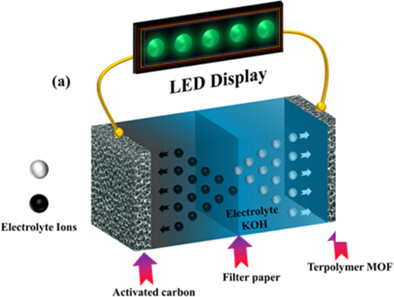
- Zn-MOF based electrode material for high performance supercapattery devices.
- High specific capacity of 172 C/g and high specific capacitance of 107.5 F/g.
- Supercapattery formed by coupling activated carbon with battery grade electron (Zn-MOF//AC).
- High energy density of 38.05 Wh/kg in parallel to a high-power density of 240 W/kg.
Numerical investigation of turbulent flow across a SiC ceramic foam
- Pages: 14436-14451
- First Published: 30 May 2022
Computational thermodynamics-assisted design of nitrate-based phase change materials for waste heat recovery
- Pages: 14452-14461
- First Published: 08 June 2022
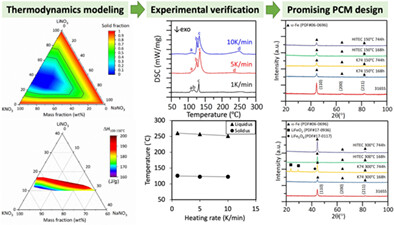
The CALculation of PHAse Diagrams method, and experimental validations were combined to design potential phase change materials. The designed phase change material exhibited a lower melting activation energy and a higher enthalpy change than that of the commercial HITEC salt. The designed phase change material exhibited a good thermal stability with the container material of a 316 stainless steel at 150 and 300°C for up to one month.
Multi-objective risk-constrained operation of hydrogen-based renewable energy integrated distribution network
- Pages: 14462-14477
- First Published: 03 June 2022
Aqueous phase reforming of xylose using bimetallic Pt3-Rex/SiO2 catalysts for H2 production: Experimental and computational study
- Pages: 14478-14490
- First Published: 29 May 2022
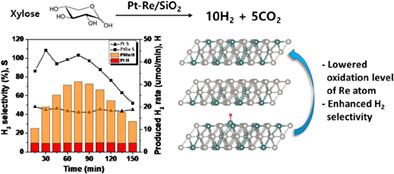
- Pt3/SiO2 and Re-doped Pt3/SiO2 catalysts were prepared by wetness impregnation method.
- Pt3-Re1/SiO2 showed the highest catalytic performance for the H2 production via the APR of xylose.
- Oxidation states of Re and Pt atoms could be tuned by varying the annealing conditions.
- Lower oxidation state of Re atom is responsible for the enhanced H2 selectivity.
Performance potential of a new molten hydroxide direct carbon fuel cell–based triple-cycle system for clean and efficient coal use
- Pages: 14491-14504
- First Published: 03 June 2022
Effects of different mineral reaction kinetics equations on predicting long-term CO2 mineral sequestration
- Pages: 14505-14516
- First Published: 12 June 2022
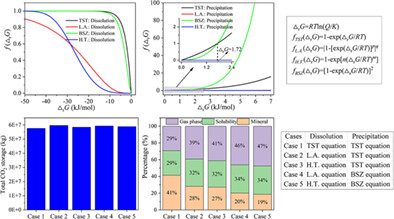
- The nonlinear kinetic equation of mineral reaction is introduced to study CO2 geological sequestration by geochemical modeling.
- Reaction kinetics equations of different reactions have no obvious effect on the total CO2 storage but significantly impact mineral storage.
- The use of linear reaction kinetics equations may greatly overestimate reaction rates and theoretical mineral sequestration capacity.
Trash to treasure: Fallen leaves as separators for supercapacitors
- Pages: 14517-14525
- First Published: 13 May 2022
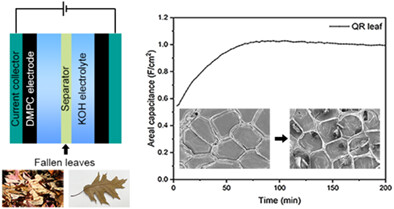
Fallen leaves were demonstrated as efficient separators in supercapacitors with dense mesoporous carbon electrodes, achieving a high areal capacitance of 1.94 F/cm2. Among four leaves, Quercus rubra (QR) leaf exhibited the best electrochemical performance as a separator for supercapacitors, which is even comparable to the commercial glass fiber separator.
Evaluation of electricity generation on GeSn single-junction solar cell
- Pages: 14526-14533
- First Published: 24 May 2022
Bimetallic hydroxyl fluoride with high-rate lithium storage performance: Co0.6Zn0.4(OH)F material
- Pages: 14534-14545
- First Published: 01 June 2022
Designing of high-performance dye-sensitized solar cells by using a new electrolyte based on deep eutectic solvents
- Pages: 14546-14557
- First Published: 26 May 2022
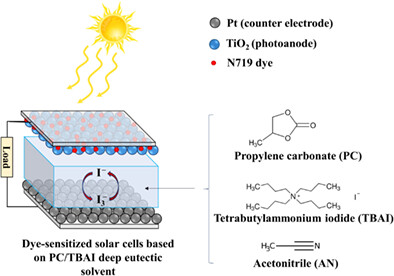
The performance of the propylene carbonate and tetrabutylammonium iodide based deep eutectic solvent (PC/TBAI-DES) as a novel and efficient electrolyte solvent for dye-sensitized solar cells (DSSCs) is evaluated for the first time. Under the optimum conditions, the DSSCs based on this electrolyte attained an excellent performance (η = 10.04%, Jsc = 21.94 mA cm2, Voc = 0.78 V, and FF = 0.58). Moreover, the interaction parameters between TBAI ion pair and PC molecule are determined through density functional theory.
Ni-doped TiO2/TiO2 homojunction photoanodes for efficient dye-sensitized solar cells
- Pages: 14558-14569
- First Published: 27 May 2022
A novel reed-leaves like aluminum-doped manganese oxide presetting sodium-ion constructed by coprecipitation method for high electrochemical performance sodium-ion battery
- Pages: 14570-14580
- First Published: 14 May 2022

A novel reed-leaves like aluminum-doped manganese oxide presetting sodium-ion (NaxMnyAlzO2) is constructed by a facile coprecipitation method. It can be used as active material for sodium-ion capacitor with 73.76 F g−1 of specific discharge capacity at 100 mA g−1 current density corresponding to 368.8 m2 g−1 electrochemical specific surface area. When combined with Na3V2(PO4)3 active materials it can bring about excellent electrochemical performances, which provide a new ideal for high-performance sodium-ion battery.




